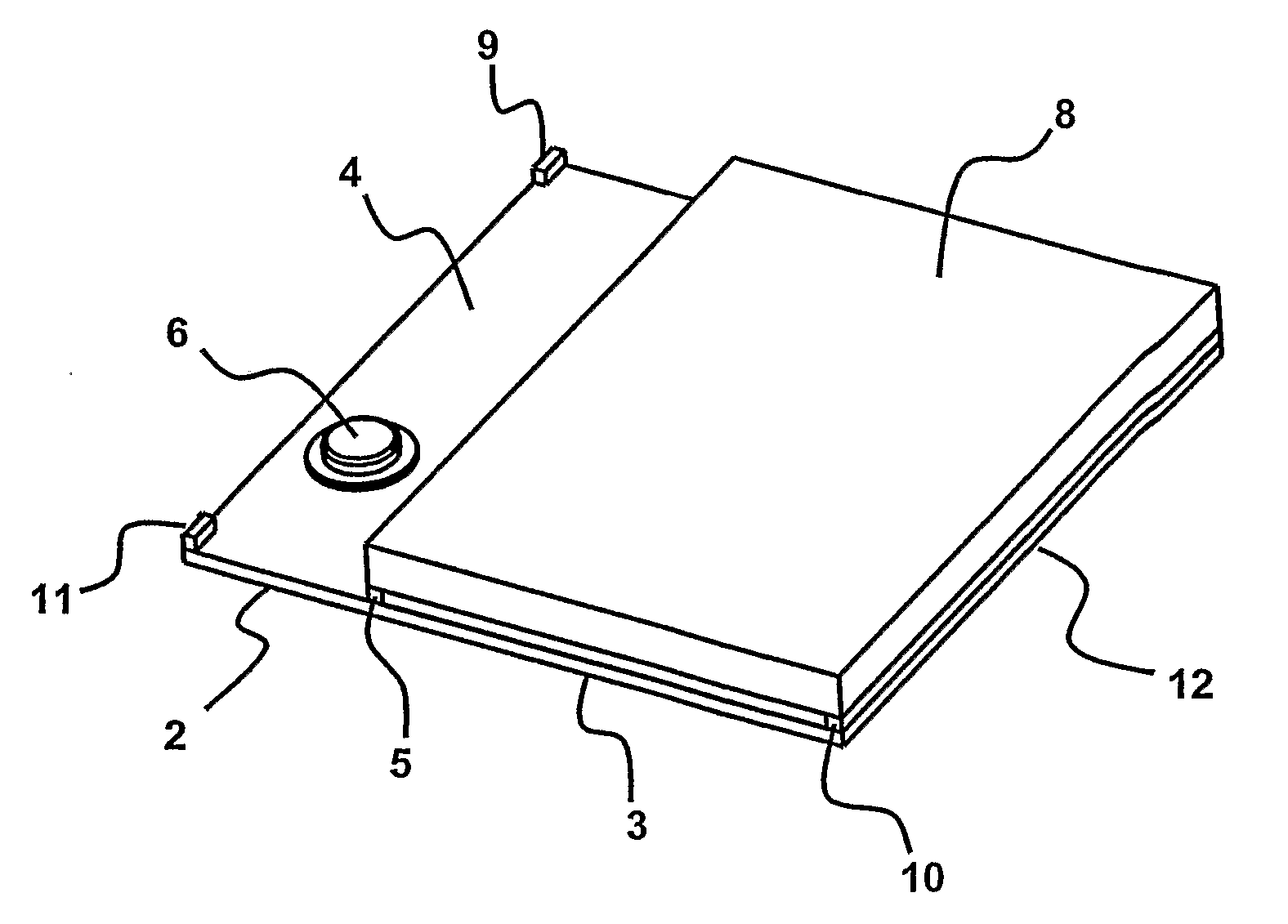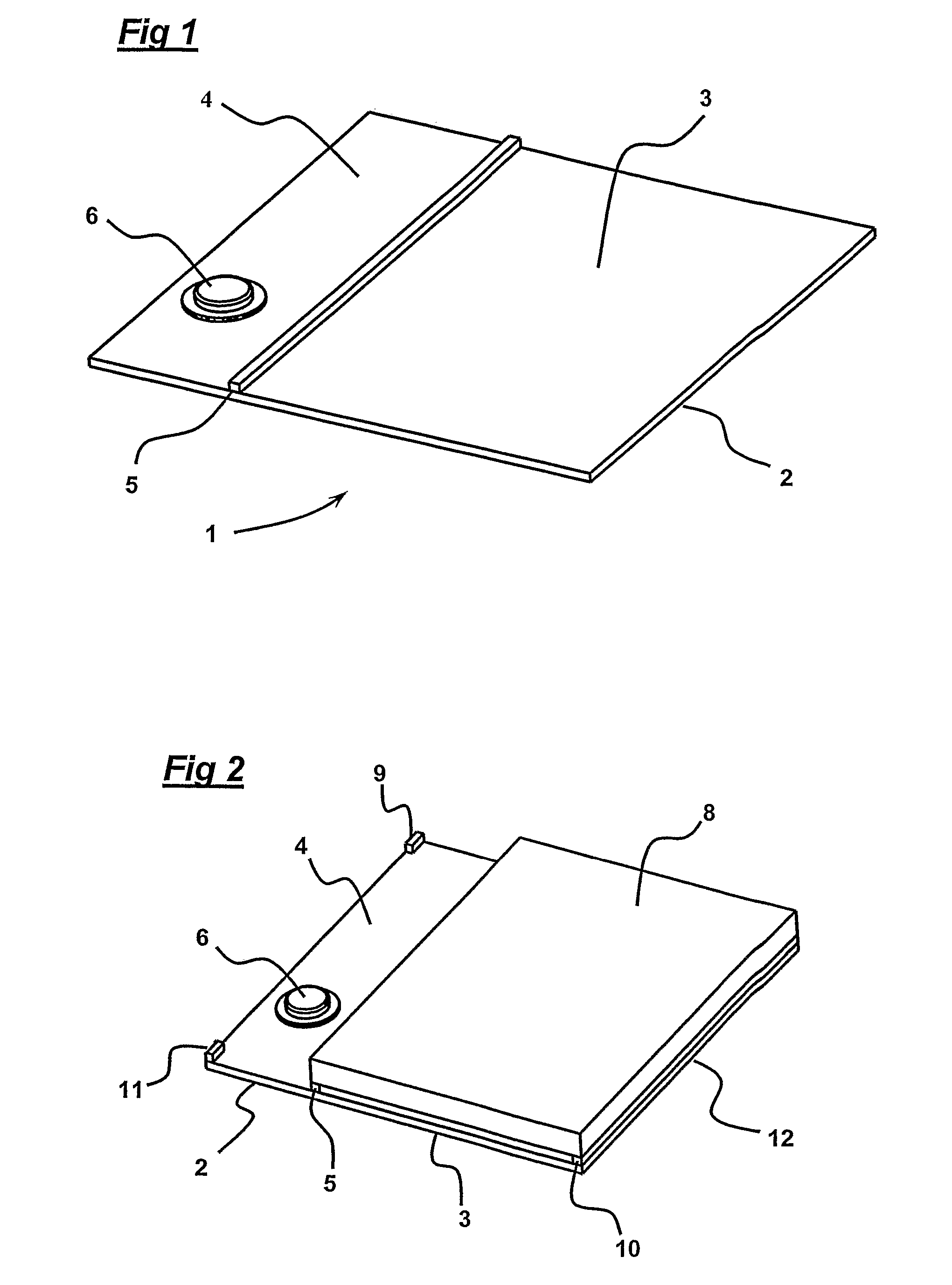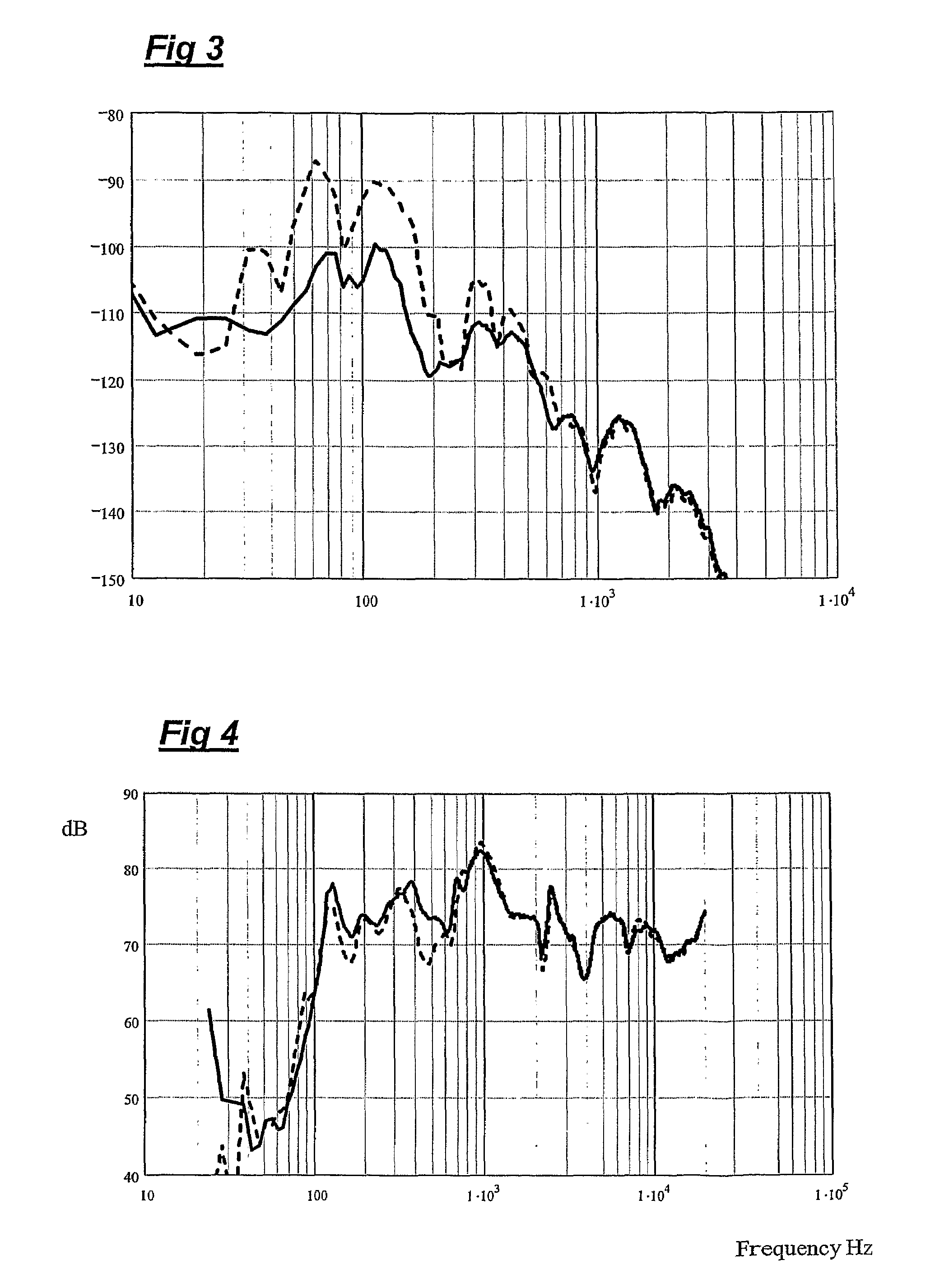Loudspeakers
a loudspeaker and wave panel technology, applied in the direction of diaphragm construction, electromechanical transducer, transducer diaphragm, etc., can solve the problems of limiting the useful sound output to 250 hz for display systems of the highest, direct control of these environmental conditions, etc., to achieve the effect of improving the low frequency capability of the device, reducing the visibility of vibration, and improving the useful low frequency bandwidth
- Summary
- Abstract
- Description
- Claims
- Application Information
AI Technical Summary
Benefits of technology
Problems solved by technology
Method used
Image
Examples
Embodiment Construction
[0033]FIG. 1 shows a generally rectangular panel-form bending-wave loudspeaker (1) generally of the kind described in International Patent Application WO97 / 09842 and wherein the panel radiator (2) is divided into two portions or regions (3,4), that is a first portion or region 1 indicated by reference numeral (3) and a further portion or region 2 indicated by reference numeral (4), by a strip-like mechanical impedance divider (5) of a foam plastics material. The divider (5) extends across the panel from side to side such that region 2 is relatively small compared to region 1. A vibration exciter (6) is coupled to region 2 to apply bending wave energy thereto to cause the radiator to resonate and radiate an acoustic output in response to a signal applied to the exciter in the normal manner. However, in accordance with the invention, low frequency bending waves are confined to region 2 by the divider (5) and, as explained below, the nature of the divider is arranged to be such that hi...
PUM
 Login to View More
Login to View More Abstract
Description
Claims
Application Information
 Login to View More
Login to View More - R&D
- Intellectual Property
- Life Sciences
- Materials
- Tech Scout
- Unparalleled Data Quality
- Higher Quality Content
- 60% Fewer Hallucinations
Browse by: Latest US Patents, China's latest patents, Technical Efficacy Thesaurus, Application Domain, Technology Topic, Popular Technical Reports.
© 2025 PatSnap. All rights reserved.Legal|Privacy policy|Modern Slavery Act Transparency Statement|Sitemap|About US| Contact US: help@patsnap.com



